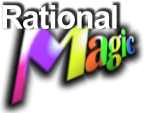|
GENRES:
General fiction, history
AUDIENCE:
Adults, teens; sophisticated situations
SYNOPSIS:
Breakthrough is an anthology that celebrates the fall
of the Berlin Wall. Twenty-seven "of the world's best comics
artists and writers" contributed their vision of this significant
historical event: Enki Bilal, Francois Boucq, Max Cabanes, Lothar
Drager, Jean-Louis Floch, Neil Gaiman, Dave Gibbons, Annie Goetzinger,
Andre Juillard, Bane Kerac, Ilona Kiss, Dave McKean, Milo Manara,
Jean-Claude Mezieres, Moebius, Victor Mora, Zeljko Pahek, Marciej
Parowski, Boguslaw Polch, Miguelanxo Prado, Dimitri Savitski,
Matthias Schultheiss, Bill Sienkiewicz, Jacques Tardi, Francois
Thomas, Daniel Torres, and the Zonic Collective. Countries represented
include France, the former East and West Germany, England, the
former Yugoslavia, Hungary, Italy, Poland, Spain, the former
USSR (ah, so many changes in ten years), and the US.
Contributions range from mood pieces to short stories. The
overall tone is positive, of course. Some stories describe Communists
who commit suicide or go mad rather than accept the changes.
Some deal with the differences between the two Berlins. Others
focus directly on the destruction of the Wall. Parowski and Polch's
"Destruction of the Idols" is a mini-history of a statue
of a despised Polish Communist and its fate on the day that the
Berlin Wall came down. Manara's sweet untitled four-pager has
a colorful graffiti fiddler dance off the wall, sweep up a black-and-white
woman (presumably an East German), get her dancing, and bring
her into the wall, thereby giving her color and (when the wall
is destroyed) letting color seep into the rest of the world.
However, there are a couple of extremely cynical offerings, such
as Gibbons's wordless "Boss," in which a superhero
figure with a $ on his chest takes control of East Germany, handing
out Coke and jeans and CDs to the East Germans.
EVALUATION:
This is a really first-rate topical collection. Only a few of
the stories hit what I considered flat notes, and the inclusion
of cynical and cautionary tales lends the collection great honesty.
There's no faulting the art, which is by turns joyful and dark,
colorful and drab, straightforward and expressionistic, realistic
and cartoony. No sour notes here! The book is made even more
useful by its inclusion of biographical information on all of
the major participants, including the two editors. I suspect
that some of this information will be hard to find elsewhere,
at least outside of Europe. Heck, I wouldn't be surprised if
this book is one of the very few easy-to-find places where one
can see work by some of these individuals, especially the ones
from former Communist countries.
Highly recommended as both a general anthology of important
European comics professionals and as a historical document. |


